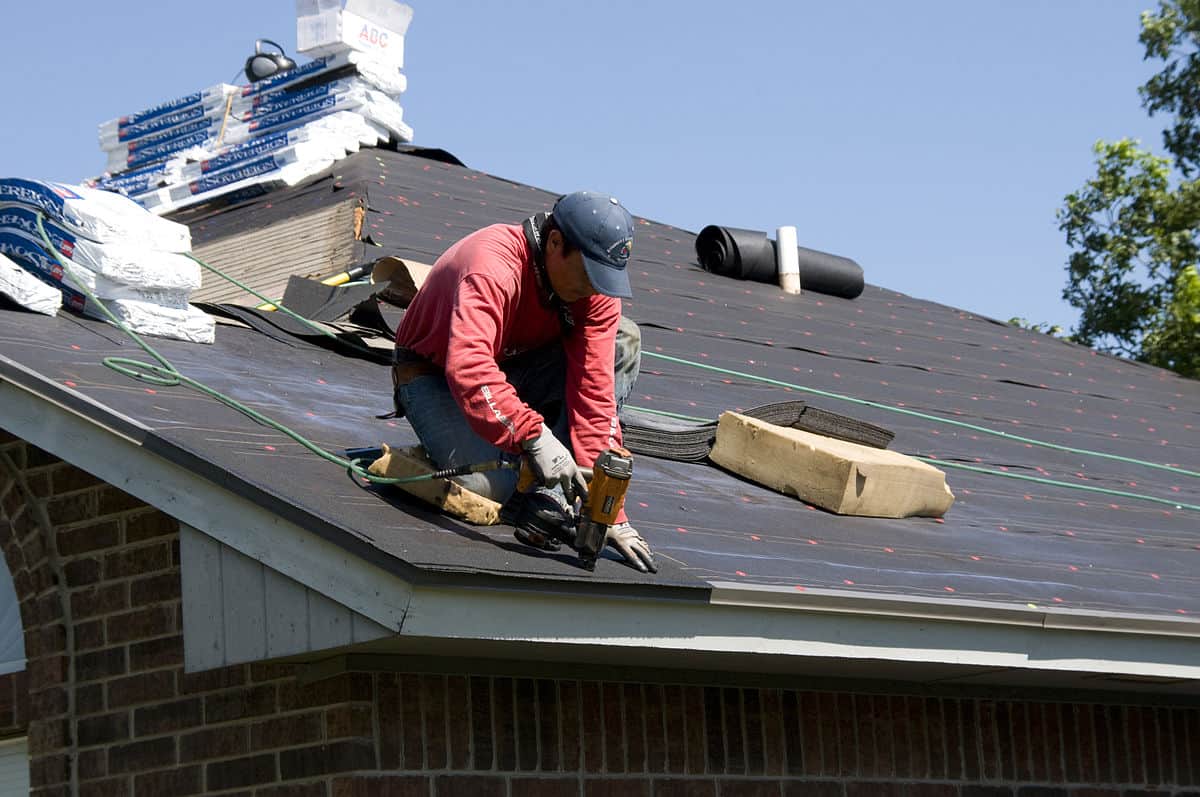How Gainesville Roofing Companies Can Change Your Home's Outside
Wiki Article
Finest Practices for Ensuring Appropriate Roofing Air Flow
A well balanced intake and exhaust vent ratio, typically 1:300, plays a crucial duty, with intake vents preferably put at the reduced edge of the roofing for cool air entrance and exhaust vents at the top for warm air exit. Keeping insulation away from vents is critical to protect against airflow constraint.Understand Air Flow Essentials
Appropriately recognizing ventilation fundamentals is important for guaranteeing the durability and performance of roof covering systems. Reliable ventilation mitigates dampness buildup and temperature level extremes in the attic, both of which can cause substantial architectural damages gradually. A well-ventilated roof aids in preventing common concerns such as mold growth, timber rot, and ice dams, which can compromise the integrity of the roofing products and the underlying structures.The primary goal of air flow is to facilitate the activity of air, enabling a constant exchange between the interior and outdoor settings. This equilibrium is accomplished with a combination of consumption and exhaust vents that function with each other to maintain optimal airflow. Intake vents, typically situated along the eaves or soffits, enable fresh air to get in the attic space, while exhaust vents, frequently positioned at or near the roof covering ridge, make it possible for hot, damp air to leave.
Secret variables affecting the efficiency of roof ventilation include correct placement, ample sizing, and ensuring that both consumption and exhaust vents are unobstructed. Regular examination and maintenance are essential to recognize possible obstructions, damages, or inadequacies in the ventilation system, consequently securing the roofing's performance and toughness.
Types of Roofing System Vents
Roof covering vents play an essential duty in preserving reliable attic ventilation and, by extension, the general health and wellness of the roof system. Numerous kinds of roof covering vents are available, each with special benefits customized to particular roof requirements.
Soffit vents are installed under the eaves and operate in tandem with roof vents to make certain a balanced consumption and exhaust system. By permitting cooler air to enter from below, soffit vents assist in the expulsion of warm air via upper vents. Gable vents, situated on the exterior walls of the attic room, deal another reliable service, specifically in homes with saddleback roofs.
Analyze Your Present Air Flow

Next, consider the age and problem of your roofing products and ventilation components. Older systems might not abide by existing building regulations or might have worn away gradually, decreasing their efficiency. Conduct a comprehensive examination to recognize any indicators of deterioration, such as rust, damage, or voids that could compromise the system's performance.
Additionally, determine the attic room temperature and humidity degrees. High temperatures and moisture can show inadequate air flow - roofing companies gainesville florida. Use a hygrometer and thermometer to acquire exact readings, comparing them with outdoor problems. Relentless inconsistencies suggest possible issues that require addressing.
Installment Best Practices
Effective installation of roofing ventilation systems is extremely important for ensuring ideal performance and durability. Appropriate installment starts with recognizing the specific air flow demands of the roofing and the structure it covers. This involves determining the proper ratio of intake to wear down vents, commonly adhering to the 1:300 policy, which specifies one square foot of ventilation for each 300 square feet of attic room flooring space.
The positioning of vents is equally vital. Intake vents should be mounted at the roofing system's reduced side, frequently in the soffits, to permit amazing air to go into. Exhaust vents, on the various other hand, ought to be set up near or at the roofing's peak to assist in the exit of cozy, damp air. This develops a natural air movement that aids maintain temperature level and moisture equilibrium within the attic room.
Seal all air vent connections diligently to stop air leakages and prospective water infiltration. Usage top notch products and comply with maker standards to make certain sturdiness and performance. Furthermore, incorporating ridge vents with baffles can dramatically improve airflow efficiency by stopping wind-driven rainfall and snow from going into the attic.
Ultimately, accurate setup of roofing ventilation systems reduces potential issues such as mold and mildew development, ice dams, and architectural damage, making certain the roof covering's honesty and the structure's total health and wellness.
Routine Maintenance Tips
Consistency in upkeep practices is fundamental to ensuring the lasting efficiency of roofing air flow systems. click to read Normal evaluations are crucial, preferably done biannually-- in the spring and loss. During these evaluations, guarantee that vents are devoid of debris, nests, and various other obstructions that could restrain airflow. Examine for any kind of signs of wetness accumulation or mold and mildew, as these can show improper air flow or leaks (roofing companies in gainesville florida).
Make use of a soft brush or a vacuum to eliminate dirt and particles from consumption and exhaust vents. Be cautious not to harm the vent screens or louvers throughout the procedure.
Appropriate insulation is similarly crucial. Guarantee that attic room insulation does not obstruct the vents, as this can severely restrict air movement. Rearrange or replace it to keep an effective barrier. if any insulation has actually shifted or worked out.
Last but not least, change any type of harmed or missing out on parts promptly. Busted vents, fractured shingles, or scrubby flashing can all add to insufficient ventilation and should be resolved without hold-up. Regular upkeep makes sure that the roof covering air flow system operates efficiently, consequently prolonging the life expectancy of the roof covering itself.
Conclusion
Guaranteeing correct roof ventilation is paramount for keeping the performance and toughness of a roof system. Adherence to the 1:300 intake and exhaust air vent ratio, coupled with the critical positioning of vents, is essential. Regular semiannual assessments, debris cleansing, and ensuring insulation does not block air flow are important methods. Applying these finest practices will certainly promote a well-ventilated roof covering system, consequently reducing potential concerns associated with moisture navigate to these guys buildup and extreme heat, inevitably lengthening the roofing system's life-span.A well balanced consumption and exhaust vent proportion, generally 1:300, plays an essential function, with consumption vents ideally positioned at the reduced side of the roofing for trendy air entry and exhaust vents at the optimal for warm air departure. Intake vents, normally situated along the soffits or eaves, enable fresh air to get in the attic room space, while exhaust vents, frequently situated at or near the roofing ridge, make it possible for hot, moist air to get away.
Soffit vents are mounted under the eaves and work in tandem with roof covering vents to ensure a balanced consumption and official website exhaust system. By permitting cooler air to get in from below, soffit vents promote the expulsion of hot air with top vents. Adherence to the 1:300 intake and exhaust air vent ratio, coupled with the tactical positioning of vents, is vital.
Report this wiki page